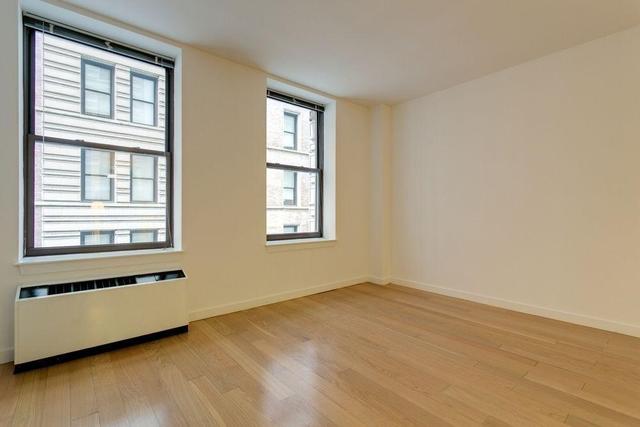
Seller Concessions: How Does Seller Concession Work
By: ROS Team
When purchasing a home, there are numerous upfront costs to consider: closing costs, appraisal fees, and title insurance. These expenses can accumulate rapidly, particularly for first-time buyers.
Fortunately, seller concessions can assist in mitigating these costs and make the dream of homeownership more financially feasible.
This blog post aims to provide a comprehensive understanding of seller concessions. We will explore its definition, functionality, and the process of requesting one. Additionally, we will delve into the advantages and disadvantages of opting for seller concessions.
What are Seller Concessions?
A seller concession refers to a payment made by the seller to assist the buyer with closing costs or related expenses. These may encompass fees for appraisal, title insurance, or even mortgage points.
Incorporating seller concessions into a home purchase can be an effective method of saving money. However, it is essential to understand their functionality before requesting one.
Seller concessions come in various forms, both monetary and non-monetary, and are often designed to alleviate some of the financial burdens that buyers typically face when purchasing a property.

1- Monetary Concessions:
One common form of seller concession involves the seller’s financial benefits to the buyer.
This can include covering a portion of the buyer’s closing costs, which typically encompass fees related to the mortgage, title search, insurance, and other administrative expenses associated with the transaction.
By absorbing some of these costs, sellers effectively reduce the upfront financial burden on buyers, making the prospect of purchasing the property more affordable.
2- Non-Monetary Concessions:
Seller concessions can also take non-monetary forms, such as including certain personal property items in the sale. For instance, a seller might agree to leave behind appliances, furniture, or fixtures that would otherwise not be included in the sale.
This can add significant value for the buyer, as they won’t need to make separate purchases for these items after acquiring the property.
How Seller Concessions Work?
Seller concessions work by increasing the home’s purchase price and then having the seller pay for some of the buyer’s closing costs or other expenses.

For example, if the home’s purchase price is $200,000 and the seller agrees to pay $5,000 in concessions, the purchase price would be increased to $205,000. The seller would then pay the $5,000 directly to the buyer’s lender or closing agent.
Seller concessions are typically negotiated as part of the purchase offer. The buyer’s agent will work with the seller’s agent to come up with a mutually agreeable amount.
The concession amount will depend on several factors, including the market conditions, the seller’s motivation, and the buyer’s financial situation.
Reasons for Offering Seller Concessions
1. Attracting More Potential Buyers:
In a competitive real estate market, it is crucial for sellers to stand out. One effective strategy is to offer concessions, which can make their property more attractive to a wider pool of potential buyers.
This increased interest has the potential to expedite the sale process and even result in multiple offers, empowering sellers to choose the most favorable deal based on their individual circumstances.
2. Helping Buyers with Upfront Costs:
Buyers often face a significant obstacle when it comes to the upfront experiences associated with purchasing a property. Sellers can alleviate this financial burden by offering to cover a portion of the buyer’s closing costs.
This gesture proves particularly advantageous for first-time buyers or those who are stretching their budget to afford a new home.
3. Navigating a Buyer’s Market:
In a buyer’s market, where there is an abundance of properties available, and buyers hold the advantage in negotiations, sellers can enhance their competitiveness by offering concessions.
In this scenario, buyers have a wider range of choices, prompting sellers to sweeten their offers in order to attract them towards their property instead of others.
4. Appealing to Budget-Constrained Buyers:
Some potential buyers may be interested in a property but find themselves restricted by their budget when it comes to covering closing costs, repairs, or other necessary expenses.
However, sellers can facilitate the purchase process for these individuals by offering concessions. This approach expands the pool of potential buyers and increases the chances of selling the property successfully.
5. Meeting Lender Requirements:
Certain loans, like FHA or VA loans, have specific guidelines and limitations regarding the amount of closing costs that the seller can cover. Offering concessions within these limits can make the property more appealing to buyers who are seeking such financing. This, in turn, has the potential to broaden the pool of interested parties.
Pros & Cons of Seller Concessions
Pros:
- Seller concessions can help you save money on your home purchase.
- They can make homeownership more affordable, especially for first-time homebuyers.
- They can help you get the home you want, even if you don’t have a lot of cash for a down payment.
Cons:
- Seller concessions can reduce the amount of money you get back at closing.
- They can make the home purchase process more complicated.
- The seller may not be willing to make a concession, especially if the market is hot.
How Do You Use Seller Concessions?
Seller concessions can be used to offset the buyer’s closing costs or other expenses. Here are some of the most common ways to use seller concessions:
1. Closing Costs:
This is the most common type of seller concession. The seller agrees to pay for all or a portion of the buyer’s closing costs, including the appraisal fee, title insurance, and recording fees.
2. Repairs:
The seller agrees to fix any property defects discovered during the home inspection. This can include things like leaky faucets, cracked tiles, or damaged drywall.
3. Move-In Costs:
The seller agrees to pay for the buyer’s moving expenses, such as the cost of hiring a moving company or renting a truck.
4. Home Warranty:
The seller agrees to purchase a home warranty for the buyer. This will cover the cost of repairs to major appliances and systems in the home for a certain period of time.
5. Mortgage Points:
Mortgage points are a type of closing cost that can be used to reduce the interest rate on a mortgage. The seller can agree to pay for all or a portion of the buyer’s mortgage points.
Who Gets The Selling Concession?
The seller gets the selling concession. A selling concession is a payment made by the seller to the buyer to help offset the buyer’s closing costs or other expenses. The seller makes the payment directly to the buyer’s lender or closing agent.
Can Seller Concessions Be Used To Pay Off Debt?
No, seller concessions cannot be used to pay off debt. Seller concessions are payments made by the seller to the buyer to help offset the buyer’s closing costs or other expenses. They can be used to pay for things like appraisal fees, title insurance, and recording fees. However, they cannot be used to pay off debt, such as credit card debt or student loans.
How Do You Negotiate Seller Concessions?
Here are some tips on how to negotiate seller concessions:
1. Do your Research:
Before you start negotiating, it’s important to understand the market conditions and what other buyers are getting in terms of concessions. You can do this by talking to your real estate agent, researching online, or talking to other buyers who have recently purchased a home.
2. Be Prepared to Walk Away:
If you’re not willing to compromise, the seller is less likely to be willing to negotiate. So, it’s important to be prepared to leave the deal if you’re unhappy with the terms.
3. Be Realistic:
Don’t ask for more than you’re likely to get. If the seller is in a strong position, they’re less likely to be willing to make concessions.
4. Be Flexible:
Be willing to negotiate on other terms, such as the purchase price or the closing date. This could make the seller more willing to agree to your request for concessions.
5. Be Polite and Professional:
Even if you’re not happy with the seller’s offer, it’s important to be polite and professional. This will make the negotiation process more likely to be successful.
Seller Concession: Final Words
Seller concessions can be a great way to save money on a home purchase. They can be used to offset the buyer’s closing costs or other expenses. However, it’s important to understand how seller concessions work before you ask for one.
Read Also: What Is a Seller Assist & How Does It Work








